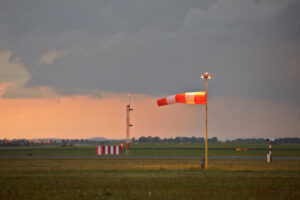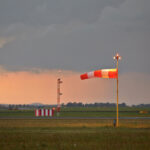Advancements in Virtual Reality Pilot Training
Pilot training has entered a new era with the integration of advanced virtual reality (VR) tools, transforming the way pilots learn and practice their skills. Unlike traditional methods, which often relied heavily on physical simulators and classroom instruction, modern VR technology offers an immersive, interactive experience that closely replicates real-world flying conditions.
VRpilot, a company based in Denmark, wants to eliminate traditional methods of pilot training and enable pilots to hit the ground running on day one of new hire, transition, or upgrade training. They now offer flight training using only a VR headset and hand controls. As a result, pilot training has become more efficient, accessible, and effective, preparing the next generation of pilots with unparalleled precision and confidence.
VR training is now available on everything from a Cessna 172 to an Airbus 320, with many more on the way. The technology can be tailored to any aircraft and any procedure and allows for multi-crew functionality, so crews can train remotely, yet still together.
Benefits of VR Training
VR offers a completely immersive training environment and promises to improve knowledge retention by up to 400%. That’s a lot of remembering. Other benefits include:
- Enhanced Realism: VR provides a highly realistic simulation of flying conditions, allowing pilots to experience various scenarios that closely mimic real-life situations.
- Improved Safety: Pilots can practice handling emergency situations and challenging scenarios in a controlled environment without any risk to themselves or the aircraft.
- Cost-Effective: VR training reduces the need for expensive flight hours and physical simulators, making pilot training more affordable for both institutions and trainees.
- Increased Accessibility: VR tools can be used anywhere, at any time, making pilot training more accessible to a wider range of students globally.
- Repetition and Consistency: Trainees can repeat specific maneuvers and scenarios as many times as needed to master them, ensuring consistent practice.
- Immediate Feedback: VR training systems often provide immediate feedback on performance, helping pilots quickly identify and correct mistakes.
- Diverse Scenario Training: VR allows pilots to experience and train for a wide variety of weather conditions, geographical regions, and emergency situations that may not be possible to simulate in real-world training.
- Reduced Environmental Impact: By minimizing the need for actual flight hours, VR training helps reduce fuel consumption and carbon emissions, contributing to environmental sustainability.
- Advanced Analytics: VR systems can track and analyze a pilot’s performance in detail, providing data-driven insights that help improve training programs and individual skills.
- Flexibility in Learning: VR offers a flexible learning schedule, enabling pilots to undergo training sessions that fit their personal timelines and pace of learning.
The incorporation of virtual reality tools into pilot training marks a significant advancement in aviation education. By providing a highly immersive and realistic training environment, VR technology enriches the learning experience, allowing pilots to develop critical skills and handle complex scenarios with greater confidence and expertise. This modern approach not only enhances safety by enabling trainees to practice without real-world risks but also increases accessibility and cost-effectiveness for flight schools and training programs. As the aviation industry continues to evolve, the use of virtual reality in pilot training promises to produce well-prepared, adept pilots who are ready to navigate the skies with exceptional proficiency.









